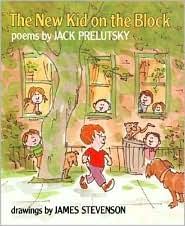
1. BIBLIOGRAPHY
De Paola, Tomie. 2002.
ADELITA: A MEXICAN CINDERELLA STORY. New York, NY: G.P Putman's Sons. ISBN 0399238662
2. PLOT SUMMARY
After the death of both her mother and father, Adelita is left under the charge of her wicked stepmother and two jealous stepsisters, following the traditional fairy tale of Cinderella. Instead of a fairy godmother, Tomie de Paola includes a loving live-in helper, Esperanza, who is banished from the household by the mean stepmother. When a rich rancher's son returns home, a celebration is held with all the area's eligible women in attendance, except for Adelita, who is not allowed to go. Watchful Esperanza visits just in time to dress Adelita in a beautiful gown that was left in the upstairs attic by Adelita's mother. Instead of a glass slipper, as in the popular version of Cinderella, Adelita wears a uniquely embroidered shawl which she hangs out her window to guide the rancher's son to her door.
3. CRITICAL ANALYSIS
As with most traditional tales, de Paola's story begins with the ever-present "once upon a time, long ago" theme. She has included a number of cultural indicators that children of Mexican heritage can relate to when reading, hearing, or viewing de Paola's version. There are candles, crucifixes, tortillas, and peppers drawn and verbalized in the pages of
ADELITA. De Paola chose to intersperse Spanish translations of some of the dialogue, making the rhythm and flow of the story a bit distracting. The illustrations and background colors show authentic adobe walls and clay pots, gaucho attire for the rancher's son, and popular adobe kitchens and houses. Overall, this is a delightful rendition of a familiar folktale that children of all cultures will enjoy.
4. REVIEW EXCERPT(S)
BOOKLIST: "De Paola ...[gives] this version a realistic patina that in no way diminishes listening enjoyment."
PUBLISHERS WEEKLY: "Cinderella fans will find much to like in de Paola's original twist, infused with Mexican warmth and color."
5. CONNECTIONS
* Include other cultural Cinderella stories to compare versions of the prince, setting, party, slipper, and godmother types. Listeners can then write their own Cinderella story.
de la Paz, Myrna J.
ABADEHA: THE PHILIPPINE CINDERELLA. An Adaption. ISBN 1885008171
Coburn, Jewell Reinhart.
ANGKAT: THE CAMBODIAN CINDERELLA. ISBN 1885008090
*Other Tomie de Paola writings and illustrations can be viewed, enticing readers to make her one of their favorite authors:
ANGELS, ANGELS EVERYWHERE. ISBN 0399243704
THE ART LESSON. ISBN 039921688X
THE BABYSITTER. ISBN 0399229086













